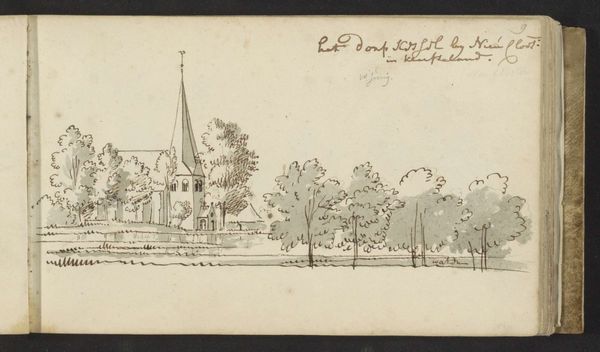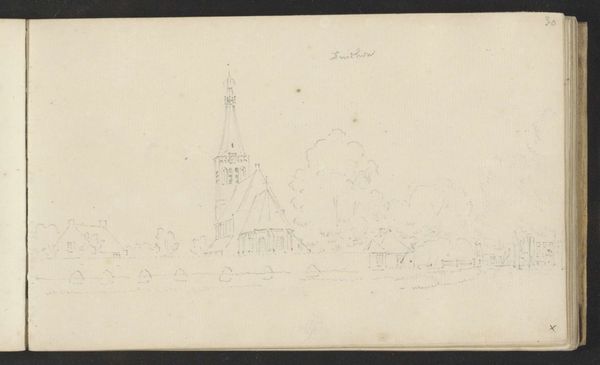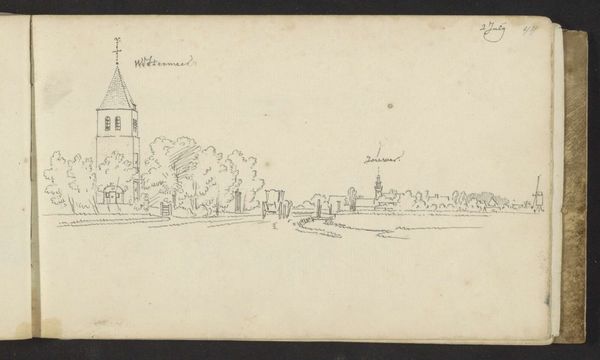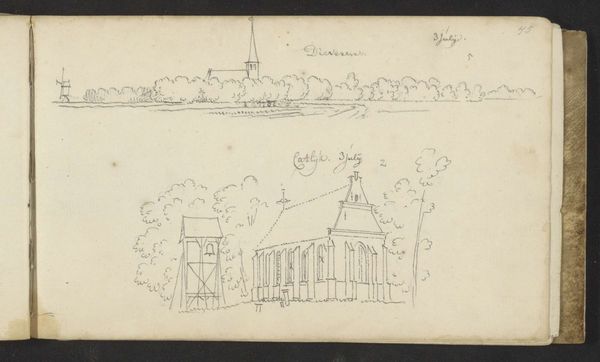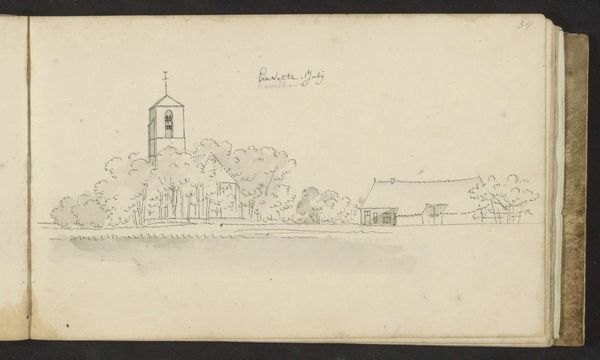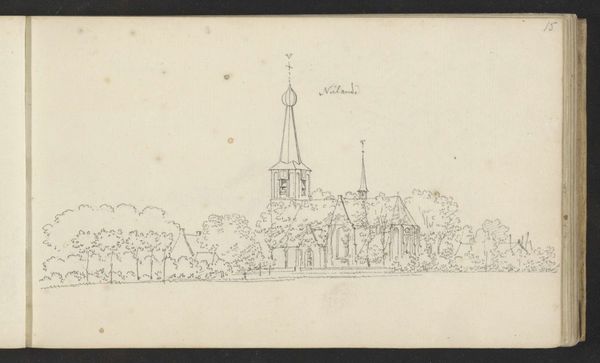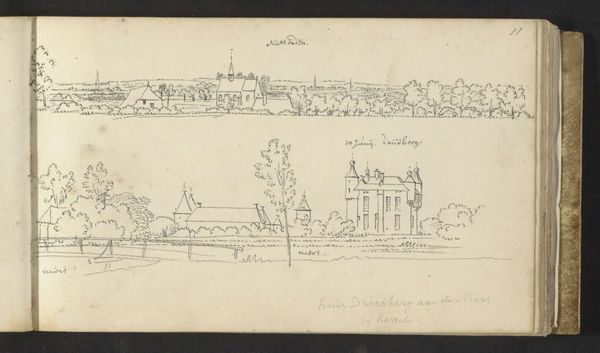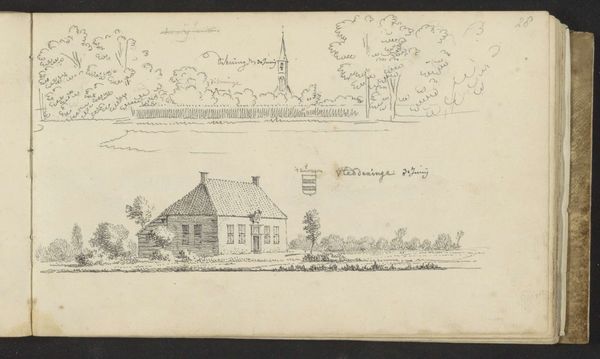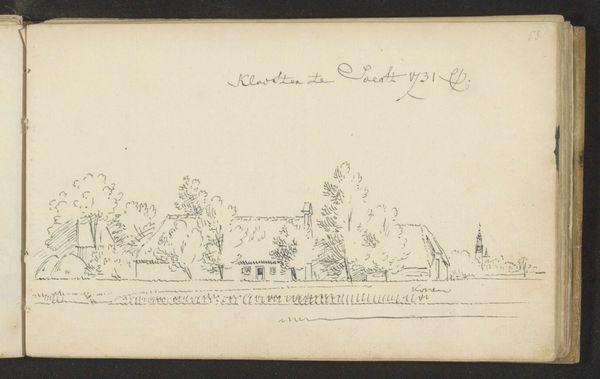
drawing, ink, pen
#
drawing
#
quirky sketch
#
dutch-golden-age
#
sketch book
#
landscape
#
personal sketchbook
#
ink
#
idea generation sketch
#
sketchwork
#
sketch
#
pen-ink sketch
#
line
#
pen work
#
sketchbook drawing
#
pen
#
storyboard and sketchbook work
#
sketchbook art
#
realism
Copyright: Rijks Museum: Open Domain
This drawing of Maartensdijk was made by Abraham de Haen the Younger around 1731. Executed in pen on paper, the scene unfolds with a refreshing simplicity. The quick, efficient lines used to create this landscape have an unpretentious quality that makes the viewer appreciate the efficiency of the drawing. The paper support provides a stark, matte backdrop that enhances the crispness of the ink. The strokes are applied with the minimum of fuss, giving a textured rendering of the village. De Haen's artistic practice was embedded in the world around him, capturing the subtle, mundane beauty of 18th-century Dutch life, and the quiet dignity of this rural landscape. By considering the material qualities of the drawing, we can better understand its value as a direct reflection of his lived experience. This challenges the traditional art historical distinction between ‘high art’ and everyday craft, inviting us to see how they converge.
Comments
No comments
Be the first to comment and join the conversation on the ultimate creative platform.
